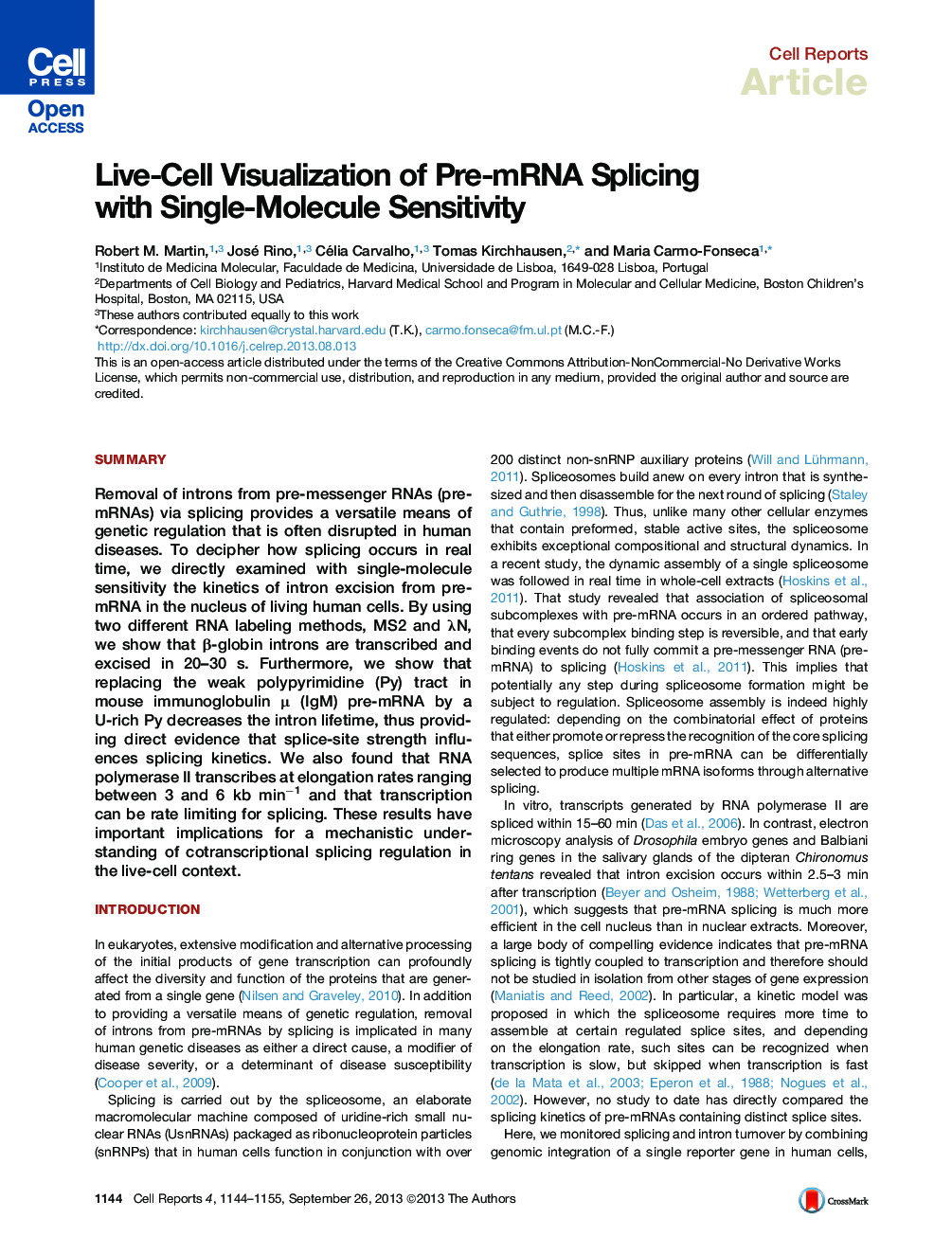| Article ID | Journal | Published Year | Pages | File Type |
|---|---|---|---|---|
| 2042014 | Cell Reports | 2013 | 12 Pages |
•Study on splicing dynamics in living cells with single-molecule sensitivity•β-globin introns are transcribed and excised in 20–30 s•Splice-site strength influences splicing kinetics•Transcription is rate limiting for excision of long introns
SummaryRemoval of introns from pre-messenger RNAs (pre-mRNAs) via splicing provides a versatile means of genetic regulation that is often disrupted in human diseases. To decipher how splicing occurs in real time, we directly examined with single-molecule sensitivity the kinetics of intron excision from pre-mRNA in the nucleus of living human cells. By using two different RNA labeling methods, MS2 and λN, we show that β-globin introns are transcribed and excised in 20–30 s. Furthermore, we show that replacing the weak polypyrimidine (Py) tract in mouse immunoglobulin μ (IgM) pre-mRNA by a U-rich Py decreases the intron lifetime, thus providing direct evidence that splice-site strength influences splicing kinetics. We also found that RNA polymerase II transcribes at elongation rates ranging between 3 and 6 kb min−1 and that transcription can be rate limiting for splicing. These results have important implications for a mechanistic understanding of cotranscriptional splicing regulation in the live-cell context.
Graphical AbstractFigure optionsDownload full-size imageDownload as PowerPoint slide
